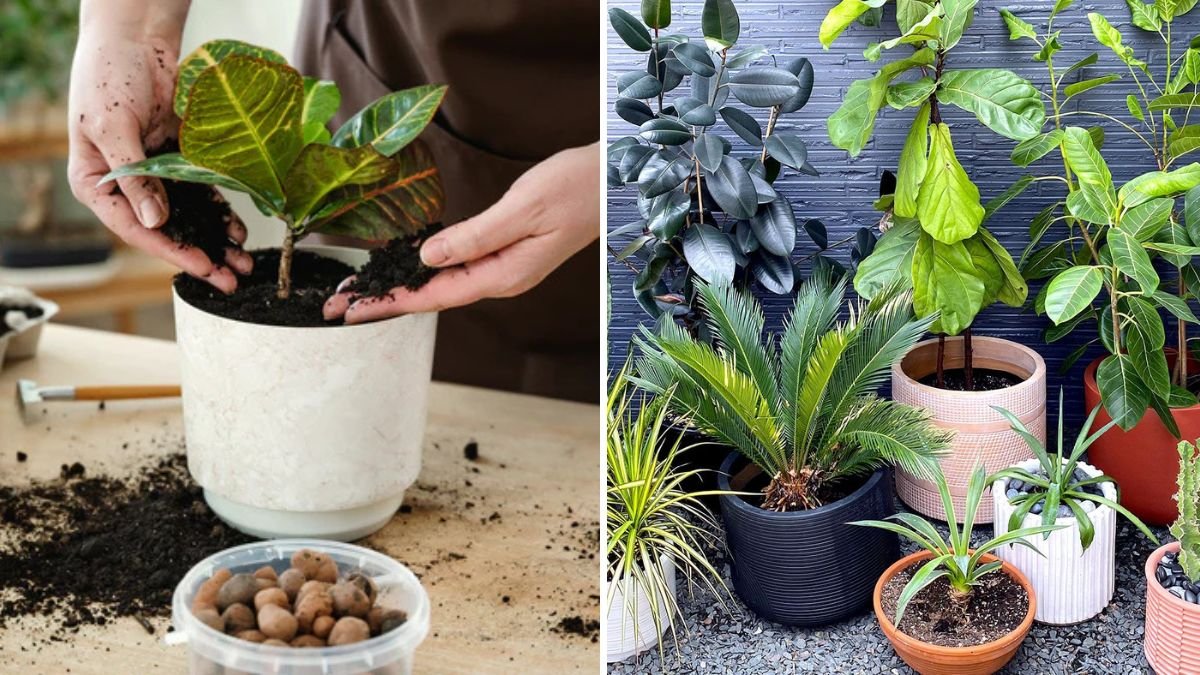Balcony gardening is an increasingly popular way to bring greenery into urban spaces, but it comes with unique challenges. One of the most crucial factors for healthy container plants is proper drainage. Without it, plants can suffer from waterlogged soil, root rot, nutrient deficiencies, and stunted growth. Understanding how to maintain proper drainage in balcony pots is essential for thriving plants, regardless of your gardening experience.
This guide explores why drainage matters, how to choose pots and soil, techniques to improve water flow, and best practices for long-term plant health.
Why Proper Drainage Matters
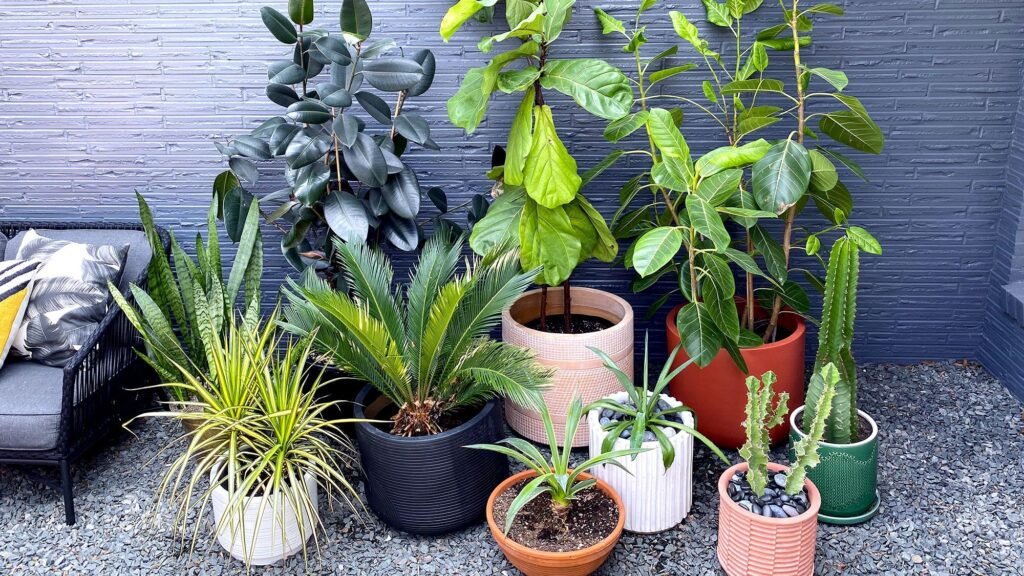
Proper drainage ensures excess water escapes from the pot, preventing stagnation around plant roots. Its benefits include:
- Prevents Root Rot: Waterlogged soil deprives roots of oxygen, creating ideal conditions for harmful fungi and bacteria.
- Encourages Healthy Root Growth: Well-drained soil allows roots to spread and access nutrients efficiently.
- Prevents Nutrient Imbalance: Excess water can leach essential nutrients, leading to deficiencies.
- Reduces Pest and Disease Problems: Standing water attracts pests and encourages fungal diseases.
- Improves Plant Vigor: Proper drainage creates a stable environment for growth, flowering, and fruiting.
In short, drainage is the cornerstone of container gardening success.
Step 1: Choosing the Right Pots
The first step in maintaining drainage is selecting the appropriate containers:
- Drainage Holes: Ensure pots have holes at the bottom to allow excess water to escape freely. Even a single hole may suffice for small plants, but larger containers need multiple holes.
- Material:
- Terracotta: Porous, naturally allowing excess moisture to evaporate, but can dry soil too quickly in hot weather.
- Plastic: Retains moisture longer; pair with multiple drainage holes.
- Ceramic or Glazed Pots: Heavy and stable; ensure proper holes as glazing limits natural evaporation.
- Size Considerations: Avoid oversized pots for small plants. Too much soil retains water longer than roots can use, increasing the risk of waterlogging.
- Shape: Shallow, wide pots dry faster, while tall, narrow pots retain moisture at the bottom. Choose based on plant type and watering needs.
Selecting the right pot creates the foundation for effective water management.
Step 2: Choosing the Right Soil
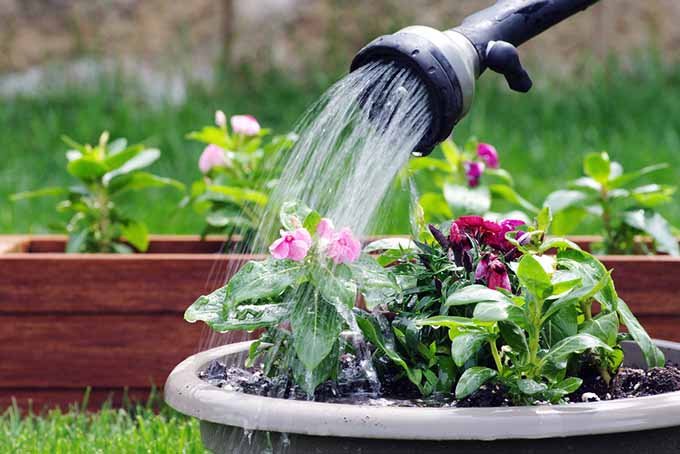
Soil composition directly affects drainage:
- Use Potting Mix: Avoid garden soil, which compacts in containers and hinders water flow.
- Add Aeration Materials: Incorporate perlite, coarse sand, or pumice to improve soil porosity.
- Include Organic Matter Carefully: Compost and coco coir retain moisture while improving nutrient content, but excess can slow drainage.
- pH Considerations: A slightly acidic to neutral mix (pH 6–7) suits most container plants and prevents nutrient lockup.
Well-prepared soil ensures moisture is retained enough for plant use but excess drains away efficiently.
Step 3: Layering for Optimal Drainage
Proper layering in pots can enhance drainage further:
- Bottom Layer: Use a 1–2 inch layer of coarse material like gravel, broken terracotta, or expanded clay pellets. This prevents soil from compacting over drainage holes and allows water to flow freely.
- Barrier Layer: Some gardeners place a layer of landscape fabric or mesh above the coarse layer to prevent soil from washing out.
- Top Layer: Add potting mix, leaving enough space at the top to prevent overflow when watering.
Layering ensures efficient drainage while maintaining soil stability.
Step 4: Watering Techniques
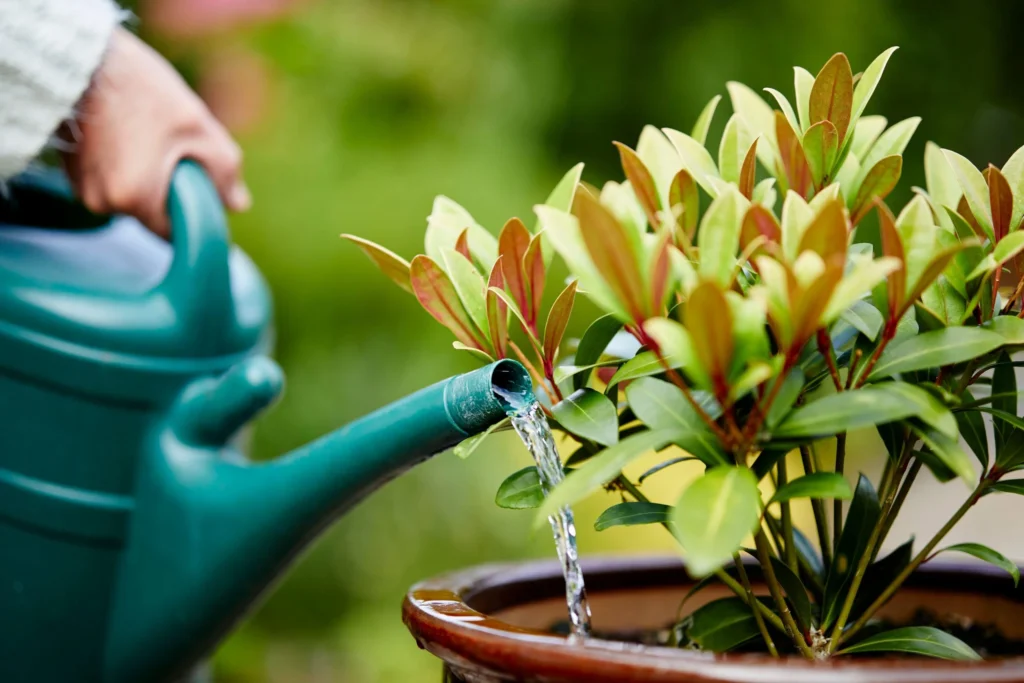
Even with the right pot and soil, watering practices influence drainage:
- Check Soil Moisture: Insert your finger 1–2 inches deep; water only if the soil feels dry.
- Water Slowly and Evenly: Rapid watering can lead to runoff and uneven soil saturation.
- Bottom Watering: Allow plants to absorb water through the drainage holes using trays, then empty excess after 15–30 minutes.
- Avoid Standing Water: Never leave pots sitting in water for extended periods; empty trays regularly.
- Adjust by Season: Water less frequently in cooler months and more during hot, dry periods.
Proper watering ensures roots get enough moisture without sitting in excess water.
Step 5: Elevating Pots
Elevating pots slightly off the balcony floor improves drainage:
- Use Pot Feet, Bricks, or Stands: Lift containers 1–2 inches to allow water to escape and air to circulate underneath.
- Prevents Waterlogging: Ensures drainage holes are not blocked by flat surfaces.
- Protects Surfaces: Keeps water from pooling on balcony tiles or wood.
Elevating pots is a simple technique that enhances airflow and drainage efficiency.
Step 6: Maintenance Practices
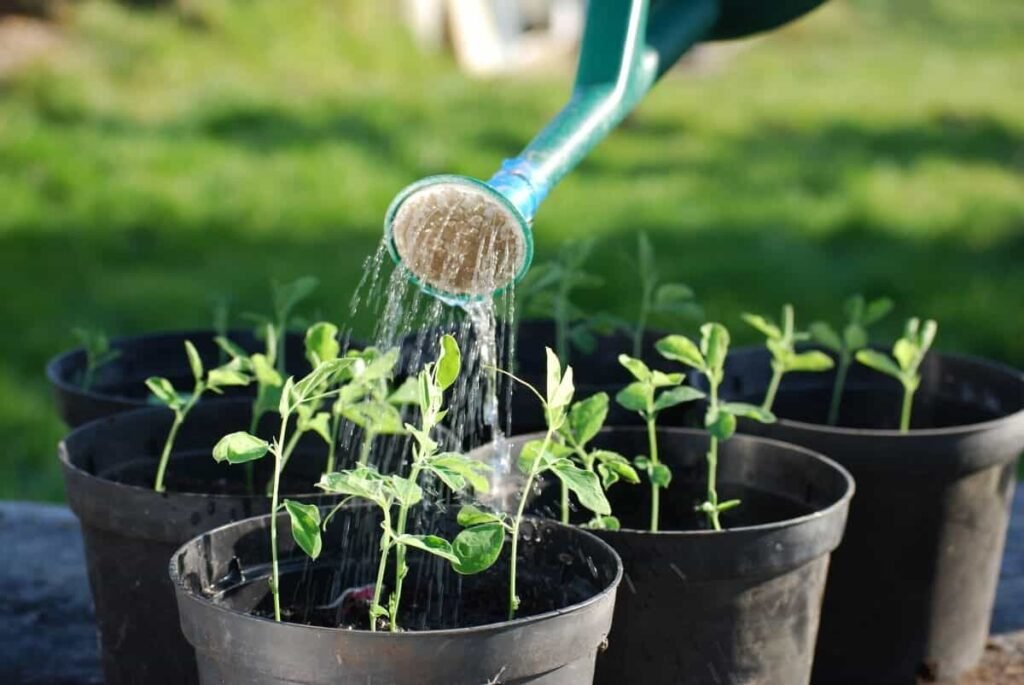
Regular maintenance is key to long-term drainage success:
- Inspect Drainage Holes: Ensure they remain unblocked by soil or roots. Use a stick or brush to clear if necessary.
- Repot Periodically: Refresh soil every 1–2 years to prevent compaction and maintain porosity.
- Monitor Plant Health: Yellowing leaves, wilting, or stunted growth can indicate drainage issues.
- Clean Pots Between Seasons: Remove old soil and sanitize containers to reduce disease risk.
- Mulching: Use organic mulch to slow water evaporation, regulate soil temperature, and reduce surface compaction.
Consistent care maintains optimal water flow and healthy plant growth.
Step 7: Choosing Plants Suitable for Balcony Pots
Some plants are more sensitive to drainage than others:
- Succulents and Cacti: Extremely sensitive to waterlogging; require fast-draining soil and frequent inspection.
- Herbs: Mediterranean herbs like rosemary and thyme prefer well-drained conditions.
- Vegetables and Leafy Greens: Need consistent moisture but also benefit from drainage to avoid root rot.
- Flowering Plants: Annuals like petunias and marigolds thrive in well-drained pots.
Matching plant type with appropriate drainage requirements reduces the risk of water-related stress.
Step 8: Common Mistakes to Avoid
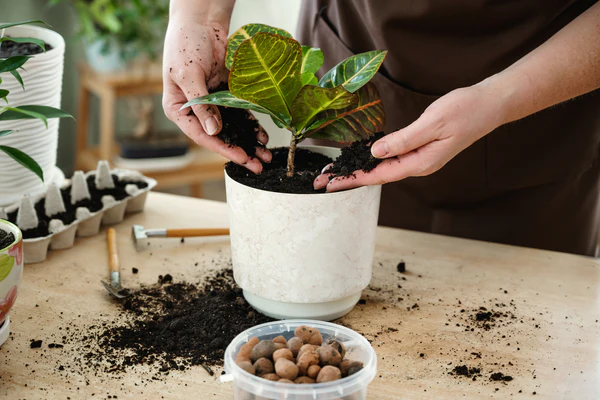
Even experienced gardeners can make mistakes that compromise drainage:
- Skipping Drainage Holes: Leads to stagnant water and root rot.
- Using Dense Soil: Heavy soil prevents excess water from escaping.
- Overwatering Out of Habit: Daily watering without checking moisture can waterlog roots.
- Neglecting Pot Elevation: Water can pool beneath flat-bottom containers.
- Ignoring Seasonal Needs: Plants require less water in winter; excess can cause rot.
Avoiding these mistakes ensures healthy, thriving balcony plants year-round.
Additional Tips for Balcony Gardening Drainage
- Group Plants by Water Needs: Combine plants with similar moisture requirements in the same area for easier watering management.
- Use Self-Watering Pots Carefully: Ensure they do not keep the soil constantly saturated; monitor levels regularly.
- Rain Protection: Move sensitive plants or pots with poor drainage under cover during heavy rains.
- Regular Observation: Pay attention to leaf color, soil moisture, and root health to catch drainage issues early.
Small adjustments can significantly improve water management and plant health.
Conclusion
Proper drainage is a fundamental principle for successful balcony gardening. Choosing the right containers, using well-draining soil, layering pots effectively, practicing careful watering, and maintaining proper pot placement all contribute to healthy plant growth. Good drainage prevents root rot, promotes nutrient uptake, enhances flowering and fruiting, and reduces disease risks.
By implementing these techniques, balcony gardeners can enjoy lush, thriving plants in any urban environment. Healthy drainage is not just a technical requirement—it is the secret to vibrant, productive container gardens that flourish season after season.
With awareness, careful planning, and consistent maintenance, your balcony can become a green oasis of well-drained, thriving plants, providing beauty, nutrition, and relaxation in even the smallest of spaces.
